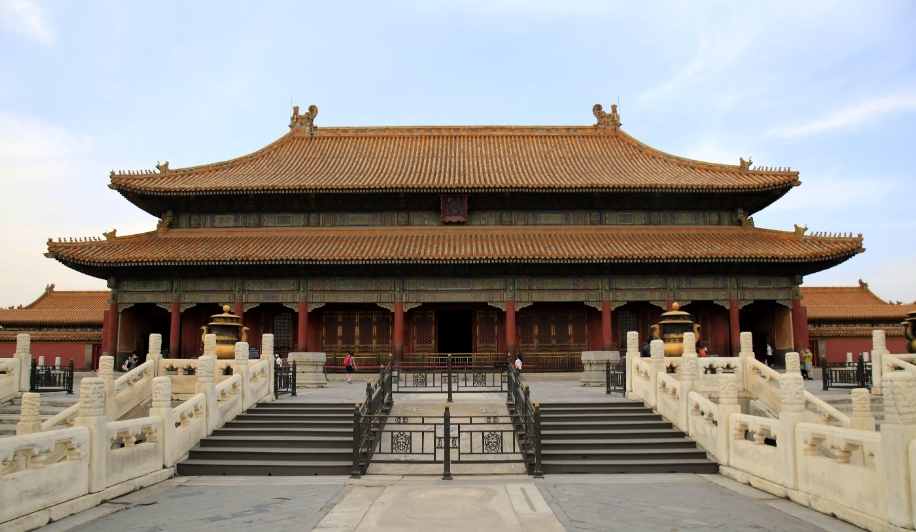
The Palace of Heavenly Purity: An Architectural Marvel of the Ming Dynasty
Nestled within the Forbidden City's heart, the Palace of Heavenly Purity (乾清宫, Qiánqīng Gōng) stands as a testament to the grandeur and architectural prowess of the Ming Dynasty. This magnificent structure, with its distinctive double-eaved roof and imposing presence on a single-level white marble platform, served as the Emperor's residence during the Ming dynasty, embodying the power and prestige of the Son of Heaven.
A Closer Look at the Architecture:
-
The Double-Eaved Roof: The Palace of Heavenly Purity is crowned with a majestic double-eaved hip-and-gable roof (歇山頂, xiēshāndǐng), considered one of the most prestigious roof forms in Chinese architecture. This roof style, characterized by two layers of eaves, signifies the building's importance and imperial association. The upper layer of eaves gently curves upwards, adding a sense of elegance and dynamism to the structure. The roof is adorned with intricate ceramic roof figures, mythological creatures thought to ward off evil and symbolize good fortune.
-
The White Marble Platform: The palace is elevated on a single-level platform constructed of pristine white marble, further emphasizing its significance and separating it from the earthly realm. This platform, known as a "须弥座" (xūmízuò), is designed to resemble Mount Sumeru, a sacred mountain in Buddhist cosmology, symbolizing the Emperor's divine right to rule.
-
The Gate of Heavenly Purity and the Raised Walkway: The Palace of Heavenly Purity is connected to the Gate of Heavenly Purity (乾清门, Qiánqīng Mén) to the south by a slightly raised walkway. This walkway served as a symbolic division between the outer court, dedicated to ceremonial activities, and the inner court, reserved for the Emperor's private life and family affairs.
Historical Significance:
Beyond its architectural splendor, the Palace of Heavenly Purity holds immense historical significance. It served as the Emperor's living quarters during the Ming dynasty and housed the "正大光明" (zhèngdà guāngmíng) plaque, signifying the Emperor's just and enlightened rule. Important state affairs were also conducted within its walls, making it the epicenter of imperial power and decision-making.
Transformation in the Qing Dynasty:
While initially serving as the Emperor's residence in the early Qing dynasty, the Palace of Heavenly Purity underwent a transformation in the reign of Emperor Yongzheng. It became the Emperor's audience hall, where he received court officials and conducted state business, while his living quarters shifted to the Palace of Mental Cultivation (养心殿, Yǎngxīn Diàn) situated to the west.
Conclusion:
The Palace of Heavenly Purity stands as a magnificent testament to China's rich architectural heritage. Its unique design elements, intricate details, and symbolic significance offer a glimpse into the imperial past, showcasing the power, grandeur, and cultural sophistication of the Ming and Qing dynasties.
FAQs:
Q1: What type of roof does the Palace of Heavenly Purity have?
A1: The Palace of Heavenly Purity boasts a double-eaved hip-and-gable roof, a style signifying high status and imperial association in Chinese architecture.
Q2: What is the significance of the white marble platform upon which the palace sits?
A2: The platform, called a "xūmízuò," is designed to resemble Mount Sumeru, a sacred Buddhist mountain, symbolizing the Emperor's divine right to rule and separating the palace from the earthly realm.
Q3: How did the function of the Palace of Heavenly Purity change during the Qing dynasty?
A3: While initially the Emperor's residence in the early Qing, it was later transformed into the Emperor's audience hall for conducting state business under Emperor Yongzheng.
note: This return of all, without the author's permission, may not be reproduced